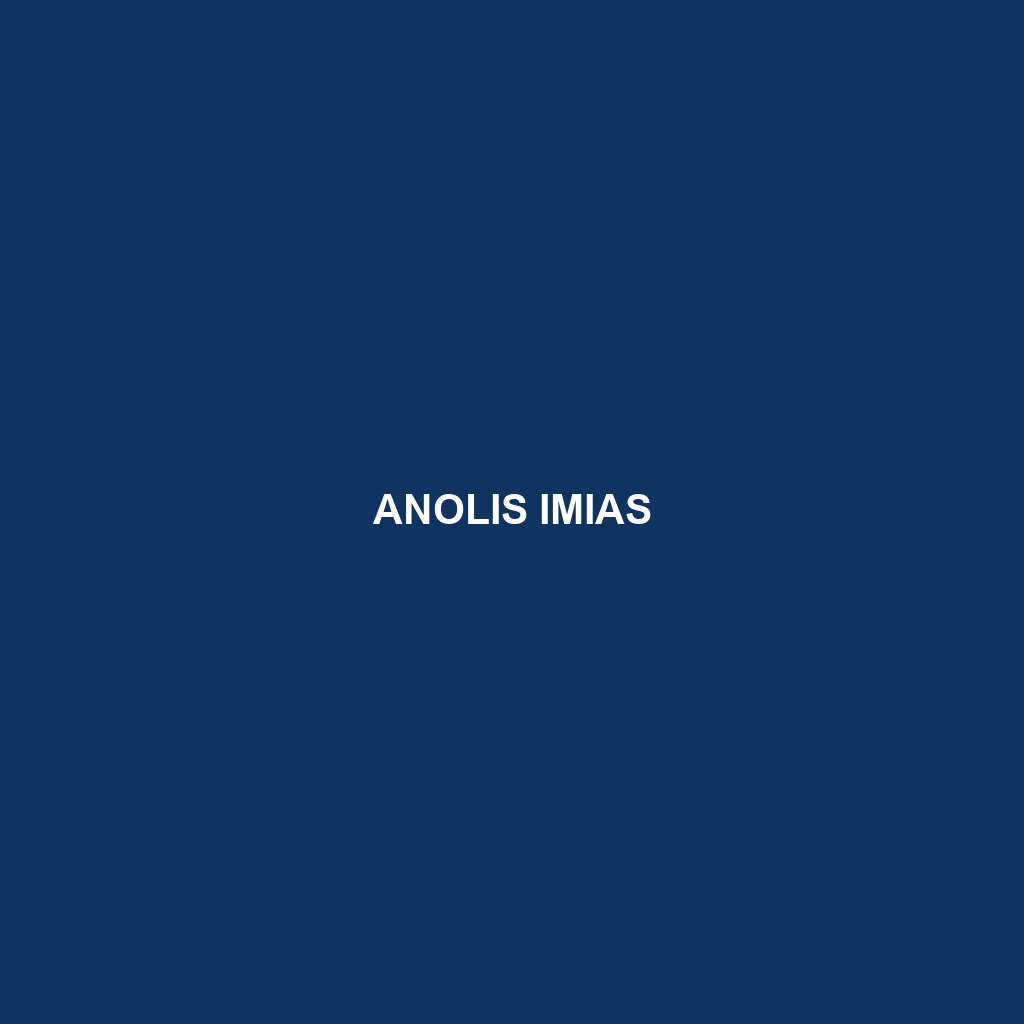Anolis imias Species Description
Common Name: Anolis imias
Scientific Name: Anolis imias
Habitat
Anolis imias, commonly known as the Imia anole, is primarily found in the Caribbean, particularly in Cuba and the surrounding islands. This species inhabits tropical rainforests, often residing in trees and vegetation, where it thrives in humid environments. The typical elevation range is from sea level to mid-elevation forests, making it an integral part of its native ecosystem.
Physical Characteristics
The Imia anole exhibits a fascinating array of physical traits. Adult males typically reach a size of about 15 cm in length, including their long tails. Their coloration varies, but they frequently display vibrant green or brown hues, allowing them to blend seamlessly into their leafy surroundings. Distinctive features include a dewlap (a flap of skin under the throat) that they use for communication and mating displays, with males showing bright shades of blue or orange.
Behavior
Anolis imias is known for its territorial behavior, especially among males, who can often be seen performing push-ups and extending their dewlaps to assert dominance. They are diurnal, primarily active during the day, and exhibit fascinating behaviors such as basking in the sun and engaging in complex mating rituals. Their ability to change color for camouflage also plays a crucial role in avoiding predators.
Diet
This species is insectivorous, predominantly feeding on small insects such as ants, beetles, and fruit flies. Anolis imias has developed quick reflexes and climbing abilities that aid in capturing prey. Their foraging habits emphasize their role in controlling insect populations, making them essential for maintaining ecological balance.
Reproduction
Breeding season for Anolis imias typically occurs during the wetter months, where males attract females through elaborate displays. The female lays 1-2 eggs per clutch in secure locations, such as under leaf litter or in crevices, with the offspring hatching after several weeks. After hatching, juveniles are independent and mature quickly, often reaching reproductive age within their first year.
Conservation Status
The conservation status of Anolis imias is currently listed as vulnerable. Habitat loss due to deforestation and urbanization poses a significant threat to its population. Conservation efforts are underway in collaboration with local organizations to protect their natural habitats and ensure the survival of this unique species.
Interesting Facts
Anolis imias possesses a remarkable ability to cling to vertical surfaces thanks to specialized toe pads. Furthermore, they can change their colors not only for camouflage but also as a form of social interaction, highlighting their adaptable nature. This incredible adaptability contributes to their resilience in varying environments.
Role in Ecosystem
Anolis imias plays a vital role in its ecosystem as both predator and prey. By controlling insect populations, they contribute to the overall health of their habitat. Additionally, as prey for larger animals, they help to maintain the food web’s balance, emphasizing their importance in the ecological framework of the Caribbean forests.
